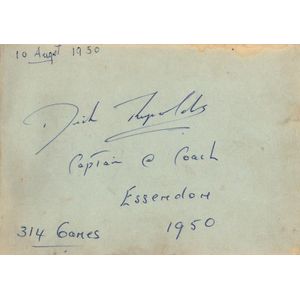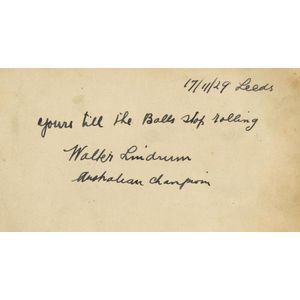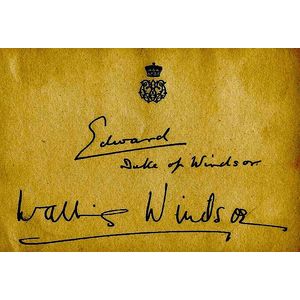The Abdication: Edward & Wallis' Love Story
You must be a subscriber, and be logged in to view price and dealer details.
Subscribe Now to view actual auction price for this item
When you subscribe, you have the option of setting the currency in which to display prices to $Au, $US, $NZ or Stg.
- Heraldic Decoration - Heraldic decoration on silver, glass, and porcelain refers to the use of coats of arms and other heraldic symbols as decorative motifs on these materials. Coats of arms were traditionally used to identify individuals, families, and institutions, and were often displayed on shields, banners, and other objects.
The heraldic decoration typically takes the form of engraved or etched designs that incorporate coats of arms or other heraldic symbols. Heraldic decoration on silver, glass, and porcelain has a long history, dating back to the medieval period when coats of arms were first used. During the Renaissance and Baroque periods, heraldic decoration on decorative objects became increasingly elaborate and ornate, with finely detailed designs that often incorporated intricate scrollwork, mythological figures, and other decorative motifs.
In the 18th and 19th centuries, heraldic decoration became particularly popular among the aristocracy and upper classes, who used these objects as symbols of their wealth and status. - Edward Viii - Edward VIII (1894 ? 1972) was King of the United Kingdom and the Dominions of the British Commonwealth, and Emperor of India, from 20 January 1936 until his abdication to marry American socialite Wallis Simpson on 11 December 1936.
This item has been included into following indexes:
- British Royal Family commemorative ware and memorabilia
- Edward VIII - memorabilia 29
Visually similar items

Essendon: 1950 Autograph Book with c18 Essendon signatures including Dick Reynolds, Unc Woods (President), John Coleman, Bill Hutchison & Doug Bigelow

Essendon: 1950 autograph book with c18 Essendon signatures including Dick Reynolds, Unc Woods (President), John Coleman, bill Hutchison & Doug Bigelow

Umpires: Victorian Football League Umpires' Association annual reports, complete run 1959-81 (23); plus other umpires ephemera (9) in binder. Fair/Good condition. (32 items)

c1929-48 Autograph Book, includes Walter Lindrum; 1929 English Rugby League team (12 signatures) & 1929-30 Australian Rugby League team (32 signatures). Fair/G condition.
